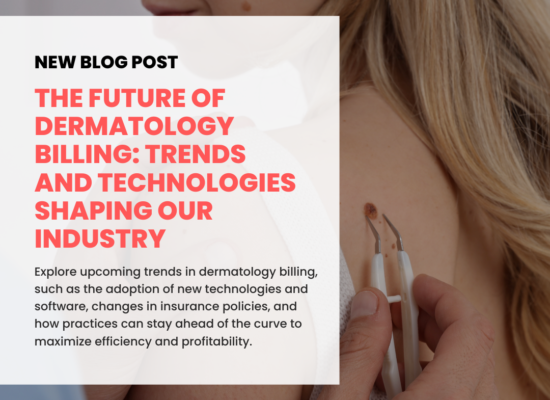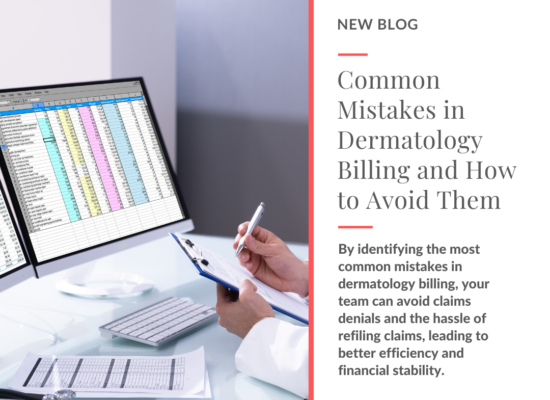Dear Dermatologists, Do You Know About Provider Credentialing?
It’s a long title on an important topic and if this headline grabbed your attention because you don’t know the answer, it’s time to talk about what credentialing is and why it’s so important to the field of dermatology – and more specifically – to your billing practices! Understanding the purpose, the process and the potential (both good and bad) of credentialing is imperative to building a credible practice that is well respected and properly reimbursed.
First – let’s talk about WHAT credentialing is?:
Simply put: credentialing is the “process of establishing the qualifications of licensed medical professionals (by) assessing their background and legitimacy.”
Next – WHY is credentialing” so important?
1. Its primary purpose would be to verify that nurses, doctors and other medical professionals have both the proper training and the professional experience to provide quality healthcare to their patients.
2. It’s done both to ensure medical proficiency and competency, allowing for medical board oversight, but also to be able to submit invoices to payers (insurance companies) for services rendered.
3. Completing the credentialing process is proof and validation that you are licensed to provide the services you offer and can therefore submit invoices for payment of those services.
4. Also, as an important adjunct to payments, national coverage providers such as Medicare and Medicaid require this process to be completed before you can submit payment requests and of course, with too many to mention here, so too do a number of other medical institutions and most (if not all) insurance providers.
5. A thorough credentialing process helps to eliminate the possibility of “rogue” practitioners and people with dubious credentials practicing in your field of expertise. From a dermatology point of view, unfortunately, we know this happens and it is one of the more significant reasons it is just better for everyone when proper certifications have been verified. It gives your patients peace of mind, ensures recognition of your hard work and achievements, and verifies that you are a certified medical professional. As well, it helps to ensure you are paid appropriately for your services and with respect to your education, experience and skills.
Finally – HOW do you complete the credentialing process?
A Quick Guide:
-
Priority Number One: If you want to practice dermatology and get paid for it, credentialing needs to be at the top of your priority list! You’ll need to gather all of your documentation including your CV, certifications, licensing, proof of insurance, your practice ID and tax number, even your SIN# (and more!) This is just a general overview, meaning you may be asked for much more than this and to help the process you may also want to ensure you have referral letters on hand and to have pre-identified persons who could act as a reference on your behalf. The universal credentialing website in the US that all providers need to be registered with is called CAQH, this is the first place all new providers need to start. Providers also need to re-validate their information every 90 days on this site and upload new malpractice certificates as well as the license and more.
-
As a next step: Spend some time identifying your strategy for insurance companies with whom you wish to work and/or those that represent the majority of your patients. Submit your credentialing applications to those payers. You may wish to have someone audit the forms before submitting them to ensure everything is completed properly and there is no missing information. Some physicians consider the use of an audit or credentialing specialist to handle the process for them because it can be a lengthy one involving follow up and multiple points of contact with everyone from the universities you attended to any hospital working privileges you have (or need.)
-
The final step comes once approved. You’ll want to record your enrollment number from the insurance carriers and ensure every member of your team from fellow physicians in your practice to those completing the billing submissions.
As we mentioned above, it’s important to remember that the entire credentialing process can involve anyone from the universities you attended, the hospitals where you completed residency, to government oversight bodies and even police organizations who may conduct background checks. You may be required to attend an interview at some point. All of this will take time so you should be prepared to allocate as little as three weeks to as long as six months for the entire process to be completed. This is all in advance of you being able to invoice for treatments performed or medications prescribed. In other words, the real potential here is that if you want to get paid, credentialing should be the first thing you do or potentially, you’ll be working for free while it’s in progress!





